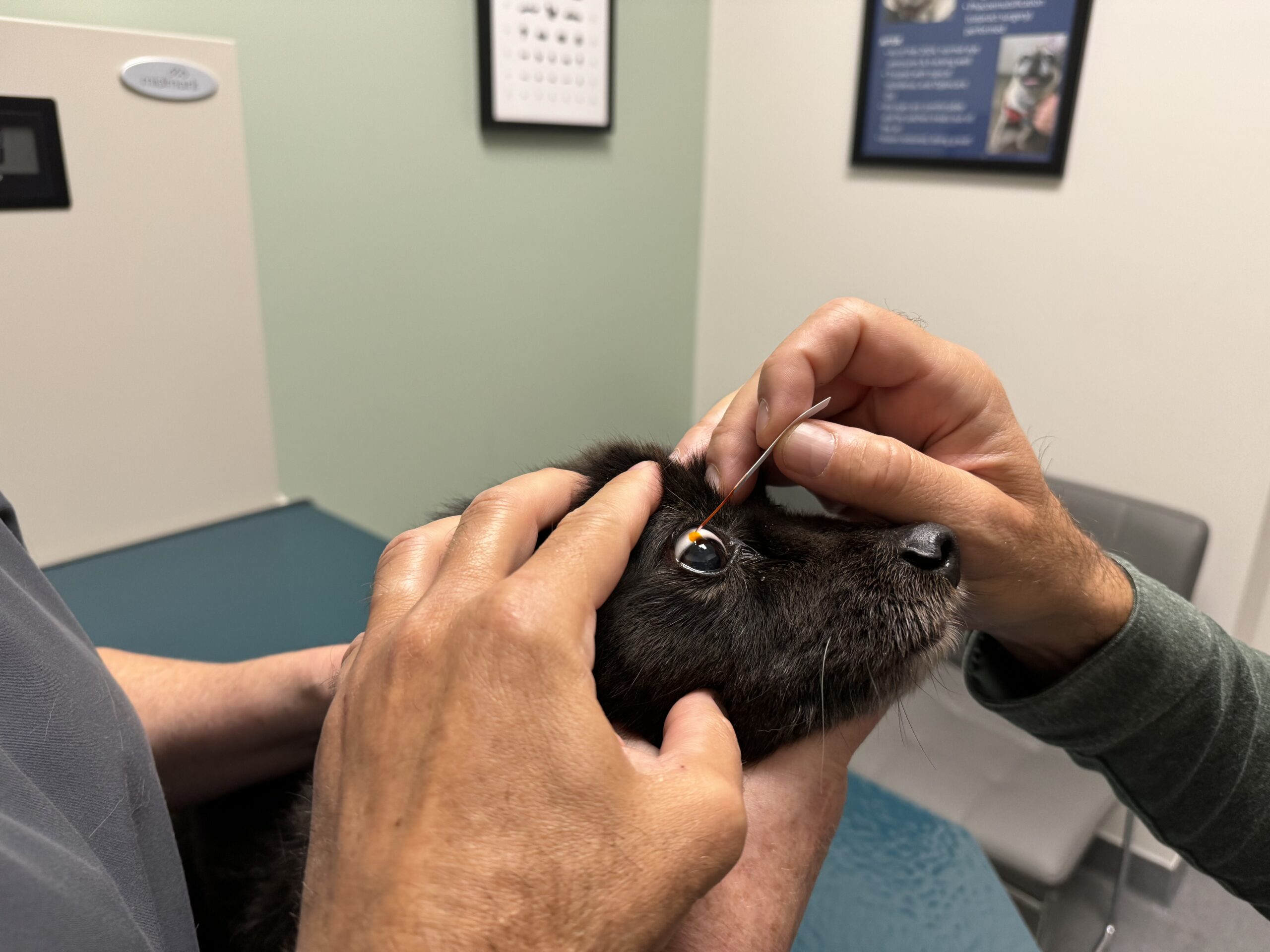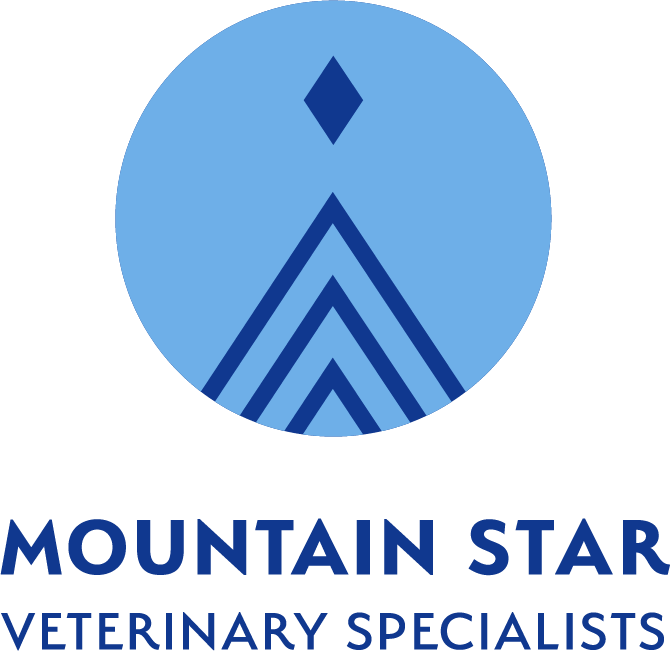
Has your veterinarian referred your cat or dog to a veterinary ophthalmologist?
If so, here’s what to expect at your first visit with one of our board certified ophthalmologists at Mountain Star Veterinary Specialists.
We look forward to meeting you. We appreciate your trust in us.
Initial interview
The doctor and a veterinary technician will join you and your pet in the exam room. We’ll ask you lots of questions to understand your concerns and goals, while your pet gets comfortable with being at Mountain Star.
We will minimize your cat or dog’s anxiety by practicing low-stress handling techniques, like calming touches, calm voices, offering lots of treats, and sometimes toys when appropriate. Plus, you’ll stay beside your pet during the entire exam to keep your pet calm and comfortable.
Eye exam and tests
You and your pet will see one of our board-certified ophthalmologists, Dr Matthew Chavkin (anchor link to his bio), Dr Emily Conway (anchor link to her bio), or Dr. Ashley Bendlin, and you can expect the following at your first visit:
A complete examination of all parts of the eye with specialized equipment.
Below, you will learn about some of the commonly performed tests at an initial appointment. They help your doctor both to diagnose your pet’s ocular problems and to monitor your pet’s response to treatment. A specific test may be omitted if it is not appropriate to your pet’s ocular condition.
While these tests might be novel and mildly annoying to your pet, they aren’t painful.
- Biomicroscopy: The doctor will examine the eyelids, cornea, conjunctiva, iris and lens with a portable microscope.
- Indirect Ophthalmoscopy: With a headset and hand lens, the doctor will examine your pet’s retina and optic nerve.

- Schirmer tear test: We place a small strip of sterile just inside the lower eyelid of your pet and left in place for 60 seconds. Your pet’s tears are wicked up the strip, bringing the dye along, allowing us to measure tear production in millimeters/minute. A low test result can be indicative of decreased tear production (Keratconjunctivitis Sicca or Dry Eye).

- Fluorescein staining: This is how we look for breaks in the corneal epithelium, which is the outermost layer of the cornea. Many patients are referred for a corneal ulcer. Fluorescein makes corneal ulcers easier to see.

- Tonometry (glaucoma test): This test is like the ‘puff of air test” you may have had at your own eye doctor. It is annoying, but not painful. Tonometry is used to diagnose disorders like glaucoma, where the pressure inside the eye is increased.

- Cytology: Sometimes, after placing an anesthetic eye drop on the eye, we collect a sample of the cells from the cornea or conjunctiva and examine those cells with a microscope in our office.
- Photodocumentation: We will take some high-quality photos of your pet’s eyes. These photographs become part of your pet’s comprehensive medical record, which we will email to you and to every veterinarian who is involved in your pet’s healthcare. The appointment isn’t over until you completely understand your pet’s eye condition, and we partner with you to develop a workable plan to restore them to health.
- Partnership: The relationship is not over when the examination is over. Mountain Star doctors and team members are available to you as questions and concerns after the examination. We are available to you by telephone, email, and text.

At Mountain Star Ophthalmology, our goal is to heal pets’ eye conditions so clients can enjoy their pets as healthy companions.
General Practioners: We truly appreciate your referrals. We’re here to support you, your clients, and your patients. We’re in this together.
